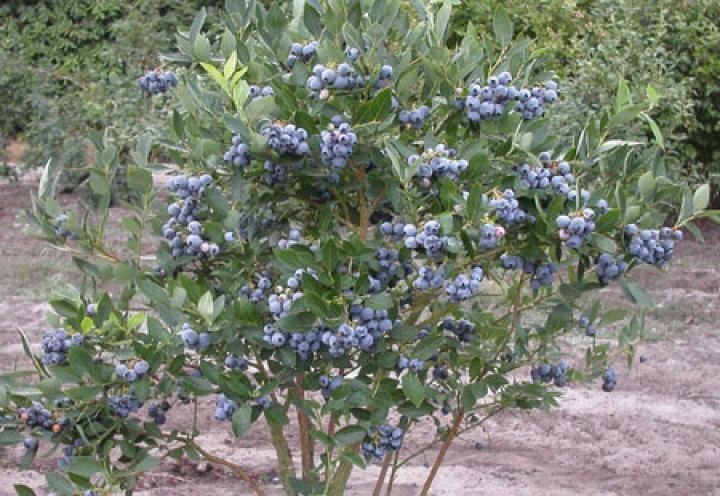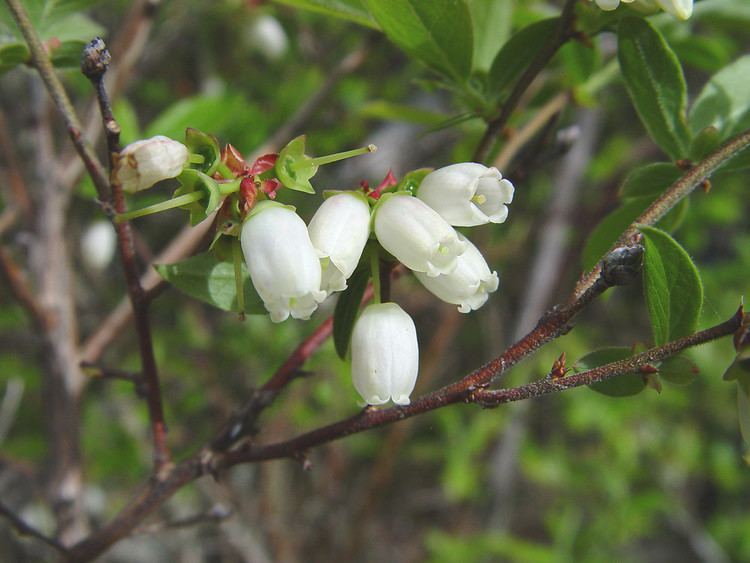Rank Species | Genus Vaccinium Higher classification Blueberries | |
 | ||
Similar Blueberries, Vaccinium angustifolium, Rubus, European blueberry, Vaccinium uliginosum | ||
Blueberries vaccinium corymbosum m4v
Vaccinium corymbosum, the northern highbush blueberry, is a North American species of blueberry which has become a food crop of significant economic importance. It is native to eastern Canada and the eastern and southern United States, from Ontario east to Nova Scotia and south as far as Florida and eastern Texas. It is also naturalized in other places: Europe, Japan, New Zealand, the Pacific Northwest of North America, etc. Other common names include blue huckleberry, tall huckleberry, swamp huckleberry, high blueberry, and swamp blueberry.
Contents
- Blueberries vaccinium corymbosum m4v
- The new blueberry variety bluedrop vaccinium corymbosum
- Description
- History
- Uses
- Cultivation
- Cultivars
- Southern highbush blueberry
- References

The new blueberry variety bluedrop vaccinium corymbosum
Description

Vaccinium corymbosum is a deciduous shrub growing to 6–12 feet (1.8–3.7 m) tall and wide. It is often found in dense thickets. The dark glossy green leaves are elliptical and up to 5 centimetres (2.0 in) long. In autumn, the leaves turn to a brilliant red, orange, yellow, and/or purple.
The flowers are long bell- or urn-shaped white to very light pink, 0.33 inches (8.4 mm) long.

The fruit is a 0.25–0.5 inches (6.4–12.7 mm) diameter blue-black berry. This plant is found in wooded or open areas with moist acidic soils.
The species is tetraploid and does not self-pollinate. Most cultivars have a chilling requirement greater than 800 hours.
History

Many wild species of Vaccinium are thought to have been cultivated by Native Americans for thousands of years, with intentional crop burnings in northeastern areas being apparent from archeological evidence. V. corymbosum, being one of the species likely used by these peoples, was later studied and domesticated in 1908 by Frederick Vernon Coville.
Uses
In natural habitats it is a food source for native and migrating birds, bears, and small mammals.
The berries were collected and used in Native American cuisine in areas where Vaccinium corymbosum grew as a native plant.
Cultivation
Vaccinium corymbosum is the most common commercially grown blueberry in present-day North America.
It is also cultivated as an ornamental plant for home and wildlife gardens and natural landscaping projects. The pH must be very acidic (4.5 to 5.5).
Cultivars
Some common cultivar varieties are listed here, grouped by approximate start of the harvest season:
The cultivars Duke and Spartan have gained the Royal Horticultural Society's Award of Garden Merit.
Southern highbush blueberry
Some named Southern highbush blueberry are hybridized forms derived from crosses between V. corymbosum and Vaccinium darrowii, a native of the Southeastern U.S. These hybrids and other cultivars of V. darrowii (Southern highbush blueberry) have been developed for cultivation in warm southern and western regions of North America.
